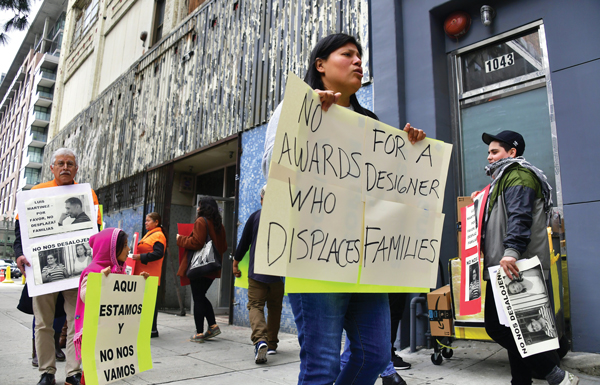Trending
The losing battle to address affordability

Those on all sides of the housing issue can agree on one thing: California needs more homes that are affordable to rent. University of California, Los Angeles economist Jerry Nickelsburg said last year that about 3 million homes are needed before pricing comes down to a range that’s affordable for average Californians.
At the moment, solutions are in short supply — but not for lack of trying. On the state level, lawmakers are pushing to reform the Costa-Hawkins Rental Housing Act of 1995, which significantly limits rent control statewide. California Gov. Gavin Newsom wants Silicon Valley technology companies to pay for workforce housing. In 2016, voters in the city of Los Angeles agreed to raise their property taxes to pay for the $1.2 billion in bonds that would go toward building housing for the homeless. Still, these measures address only pieces of a far larger problem.
Federal tax policy, local market factors and rent control all affect how much and at what price housing is developed across the state. Here are some facts and figures that illustrate just how bad California’s housing crisis is and what’s being done about it.
$155,727
The annual income needed to buy a home at the median sales price in the Los Angeles metropolitan area as of Q1 2019 — $585,000.
11

The number of bills passed last year by state lawmakers in Sacramento that are intended to spur housing development. Among them was a bill to double the duration of building permits from six to 12 months in order to help developers deal with
delays. Another bill requires local governments to approve supportive housing developments if they meet certain requirements. An additional bill provides local governments with more accurate housing goals.
1,832
The number of affordable units developers proposed in the city of Los Angeles through the Transit Oriented Communities (TOC) program last year, its first full year in effect. Those units account for 30 percent of all affordable units proposed in the city of L.A. last year, a sign of its popularity among developers. The program allows developers to boost overall unit count, build taller and take advantage of other incentives in exchange for including affordable units in developments near transit. Since TOC took effect in late 2017, one affordable unit is filed for every four market-rate units filed via the program.

Sen. Scott Wiener
1
The number of Senate committee hearings that San Francisco State Sen. Scott Wiener’s SB 827 received before it was killed last year. The bill would have overridden local zoning laws to allow more dense development near transit, much like the TOC program in L.A. The bill received strong criticism from local governments, which argued that it ignored local control over development. Wiener has since scaled back the bill and reintroduced it this year as SB 50. It’s gotten a warmer welcome, passing in the Senate Housing Committee in early April, one of many hurdles it will need to leap to become law.
$1B
The difference in private equity investment from 2016 to 2018. Last year, private equity investors invested $1 billion less in low-income housing tax credits — $2.6 billion compared to 2016’s $3.6 billion. Investors purchase those credits to lower their tax liabilities from banks, which buy them from affordable housing developers, who use the money to build housing. The drop is largely due to the 2017 federal tax overhaul, which reduced the corporate tax rate from 35 to 21 percent, lowering the value of these credits.
32.8%
The percentage of monthly income a typical renter in the Los Angeles metro area pays in rent, according to a Freddie Mac analysis. A renter is considered rent burdened if he or she spent more than 30 percent of pay on rent.

Gov. Gavin Newsom
60
The number of days that went by before Newsom shelved a plan to withhold state funding from cities that fail to meet their state-designated housing production goals. Newsom proposed the hard-nosed policy on his third day in office, but Sacramento Democrats strongly opposed it. Newsom has instead proposed $750 million in funding for new housing statewide and additional funding to cities when work on new housing starts there.
10 years
The minimum age of a housing unit that should be eligible for rent control in order to keep pace with deregulation of units and population increases, according to advocates. The Costa-Hawkins Rental Housing Act of 1995 sets a hard cutoff of Feb. 1, 1995, meaning that no unit built after that date can be put under rent control. State Assemblymember Richard Bloom (D-Santa Monica) is using the rolling 10-year cutoff date as a starting point for negotiations for updating Costa-Hawkins this year with Assembly Bill 36.
$500M
The amount in low interest loans that Newsom wants large technology firms based in Silicon Valley to lend to developers in order to build so-called workforce housing, which refers to housing that’s affordable to those making between 60 and 120 percent of area median Income and is located close to their jobs.




